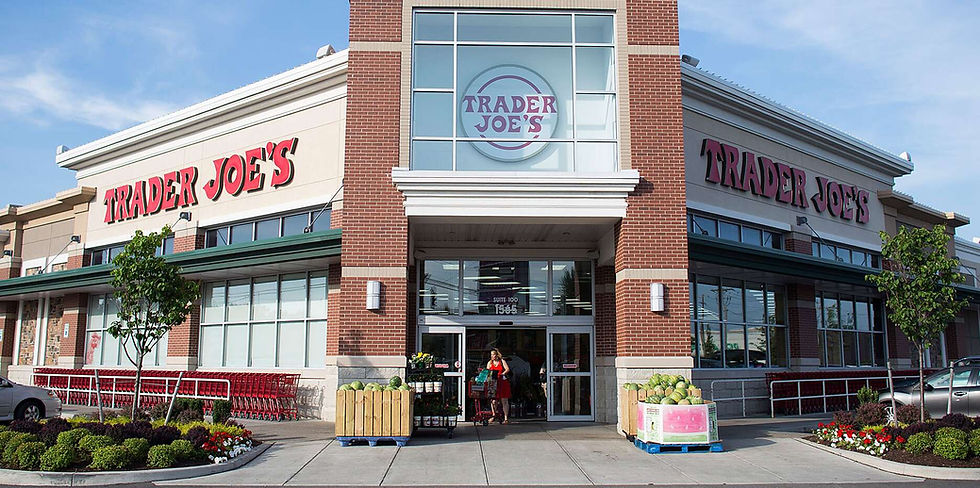Are Retail Stores actually dying?
- Prakhar
- Aug 5, 2022
- 3 min read
Big retail chains like Kmart, Macy's, Crocs even Target are closing thousands of their stores to cut losses, Some even going bankrupt like Ravalon and JCPenny. So one might think that are retail chains actually dying? Has e-commerce won the battle?
Well No, With the advent of e-commerce sites like Etsy, Amazon, and Shopify has pushed people towards online shopping. People now want everything home delivered and companies like GoPuff and Gorillas are now delivering groceries within 10 minutes!

During the pandemic, These companies got billions in funding rounds and started offering home deliveries at ultra low rates some even losing millions every month just to acquire few customers. They did this to make customers habitual of their services and gain market share. But now these companies are struggling to get funding due to bear market sentiments.
On the retail side, Over 12,563 stores were permanently closed mainly family-owned. Big retail chains like Walmart and Costco survived the pandemic without any significant store closures. Stocks of major retail chains were red throughout 2020 (excluding GameStop).
Store closure due to technology is not new, Economists have termed this phenomenon as the "Rustbelt phenomenon". In 1980, the US had peaked its manufacturing output after which the companies started using machines in factories to increase profitability some even outsourcing the manufacturing part, This heavily affected the job market, and a majority of high-paying jobs got evaporated. This affected the purchasing power of consumers which in turn caused a recession and many retail chains got affected by this and a downturn in the stock market caused even more damage to the already suffering retail sector.
Even before the pandemic retail chains were on a decline and here's why-
Convince of e-commerce (Exciting offers, Home Delivers, etc.)
Insufficient marketing done by retail chains
Poor store management (Out of Stock, Again?)
Too much traffic (Due to rising in car ownership)
Increase in social anxiety (Further pushed by Covid-19)
Lack of proper car parking space
But all is not lost for retailers, They have one significant leverage against e-commerce. Big retailers like Walmart, Target, and Best Buy are all moving toward an omnichannel direction in which retailers use their stores to directly ship orders to consumers without needing for a separate warehouse. With this method, they can fulfill orders quickly and cheaply. In Amazon's case, They have to buy big warehouses all around the country and modify it to store and ship products. This becomes a very capital-intensive project.

Retail is still much bigger than e-commerce, According to Statista, Worldwide physical retail sales surpassed $19.86+ Trillion, whereas e-commerce only managed to surpass $5.07 Trillion. Walmart alone annually brings $559 Billion in revenue followed by Costco with $166.78 Billion. With the acquisition of Whole Foods, Amazon also entered the retail sector and now operates over 598+ stores across the states.
Retail is considered a foundation for any economy as it provides jobs to millions of people across the world. The retail sector strengthens the local economy therefore it isn't feasible that the retail sector will close down. But we are experiencing that the
We all have seen how Sears, Revlon, and J.C. Penny filed for bankruptcy and closed down completely with some recovering from bankruptcy however some troubles are far from decreasing. However, if we look at the revenues of Nordstrom or Kohl they have experienced record revenues even though other contemporary retail stores are closing down. If we look at Nordstrom they had 156 locations in 2005 which dramatically increased to 292 in 2014. However, they had a total of 397 stores by 2021.

This points out the fact that although throughout the decade offline retail shopping sector was seeing various closures. But Nordstrom on the other hand had dramatically increased its retail store locations. The reason for this being there was a comprehensive strategy combining offline and online shopping.
These stores managed to stay because the demand never weakened in the areas where they opened. While the company had a significant online presence it didn't dampen up its offline store experience instead it customized the whole shopping experience. The Nordstrom analysis revealed that over the decades its revenue per square foot never decreased and instead it increased exponentially.
A company with a massive expansion outlook with zero focus on customer experience leasing out huge commercial spaces is bound to fail shortly. The companies need to craft an exqexquisite opping-based experience for its customer to survive the retail death. The facts about the death of retail aren't very sound because statistics point out that the millennials aren't massively shopping online as claimed by popular culture. It's a mix of offline shopping. Customers still crave experience and if you can provide them with the perfect experience you can easily sail through.









Comments